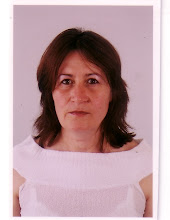Men's costumes are of two major styles: belodreshna (predominantly white), or chernodreshna (predominantly black), depending on the colour of the outer garments. These two patterns are not geographically based varieties, but rather two consecutive stages in the development of the male costume.
The earliest prototype is assumed to be the one consisting of a long shirt with skirts falling above the white woollen or cotton pants tied at the waist with a waist band or belt. This conservative style was preserved for a long time because it was suitable for the most common occupations - farming and cattle-breeding.
The belodreshna men's costume includes: a tunic-like shirt, pants, and outer clothes made of white fabric (thick cloth of homespun wool). The pants appear in two variants: benevretsi (long and narrow, with tightly fitting nogavitsi in the lower part), and dimii (with broad and short legs).
The silhouette of the belodreshna costume is produced by the outer garment (kusak, klashnik, dolaktenik, golyama dreha). It is of wedge-like cut and considerable length. Stylistically, it is characterised by the specific linear embroidery motifs and colour braiding lace on the hems of the neck and on the tops of the wedges. An essential element is the waist-band made of richly ornamented fabric, predominantly red, tightly wound around the waist.
There is sound evidence that the belodreshna costume is of Slavic origin. It was to be found throughout the Bulgarian ethnic territory. It was best preserved in its original appearance in North-Western Bulgaria as late as the early decades of the 20th century.
The emergence of another type of men's costume - chernodreshna - was part of a country-wide trend of men's clothes becoming darker, particularly prominent in the period of the Bulgarian Revival. This tendency was the result of the new social, economic, and cultural context. Beginning from the late 18th century till the middle of the 19th century men's clothes were no longer made of white aba (a kind of woollen cloth). They were instead made of black shayak (woollen textile), the pants and outer garment being of different cuts.
The pants, called potouri, are broad, with abundant black braiding decoration. An interesting point is the widespread popular belief that the more folded and pleated the potouri (their bottom in particular), the more well-to-do their owner.
The outer clothes (elek, aba, anteriya) are of straight cut and waist length.
Абонамент за:
Коментари за публикацията (Atom)

Няма коментари:
Публикуване на коментар